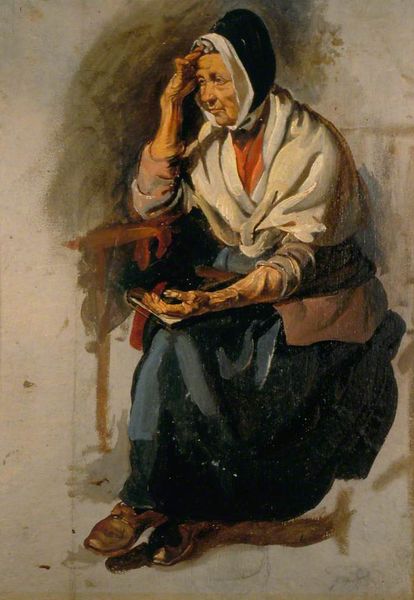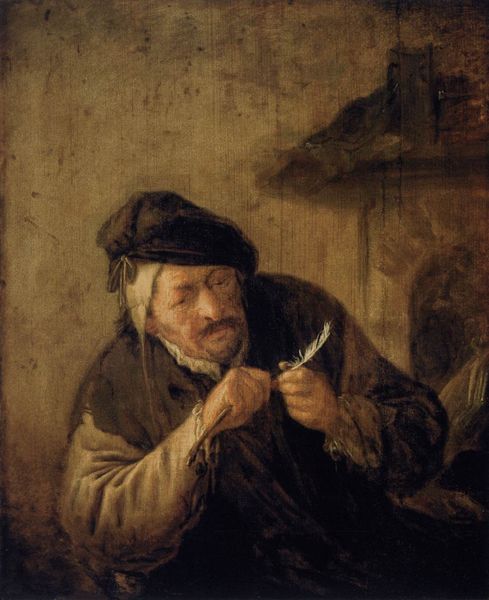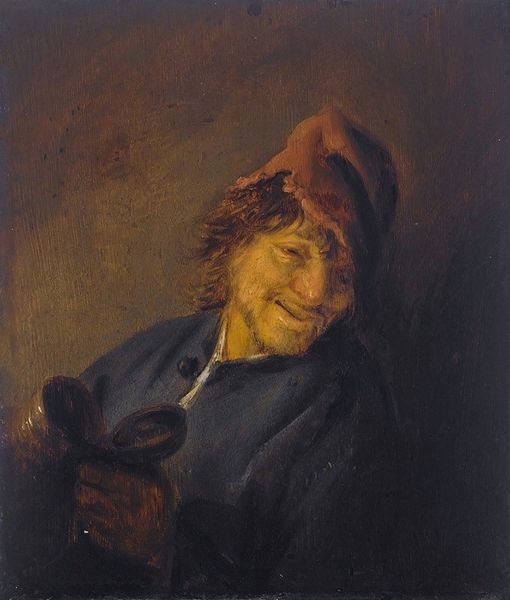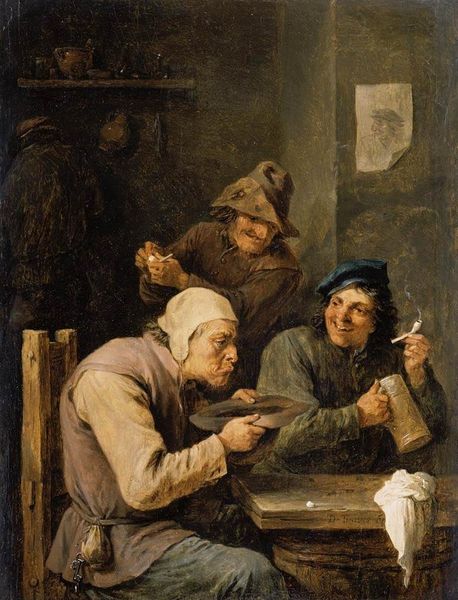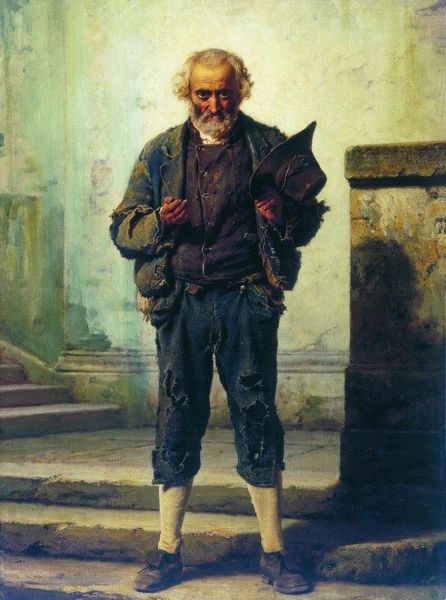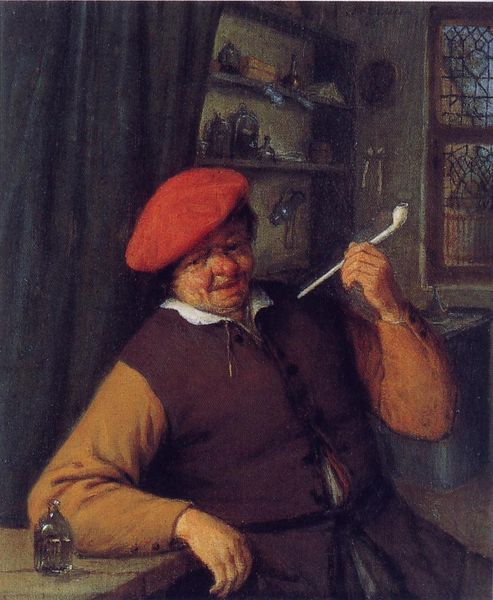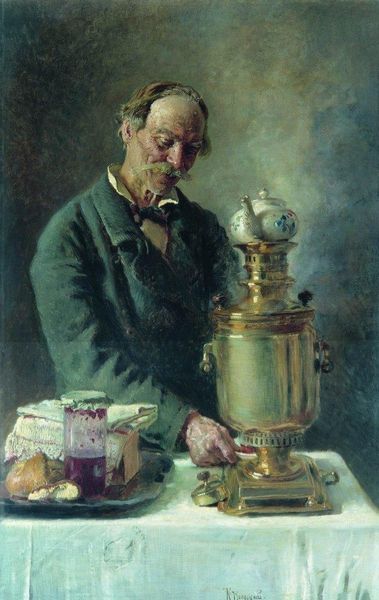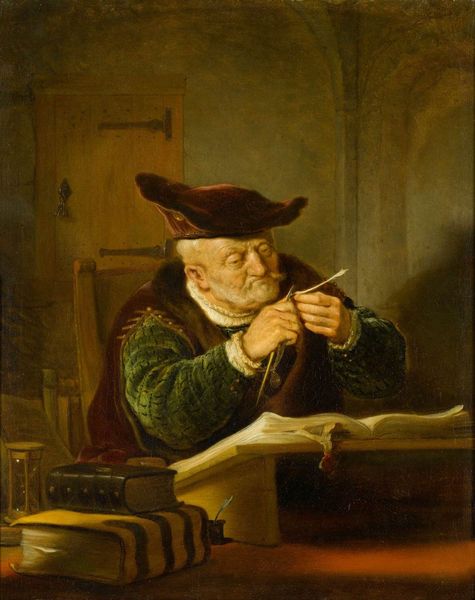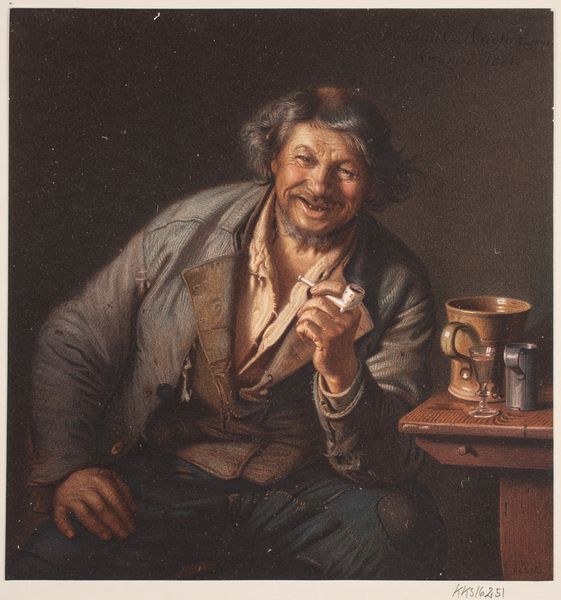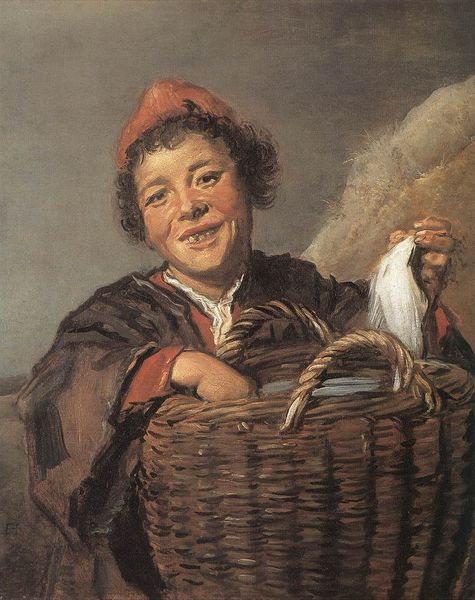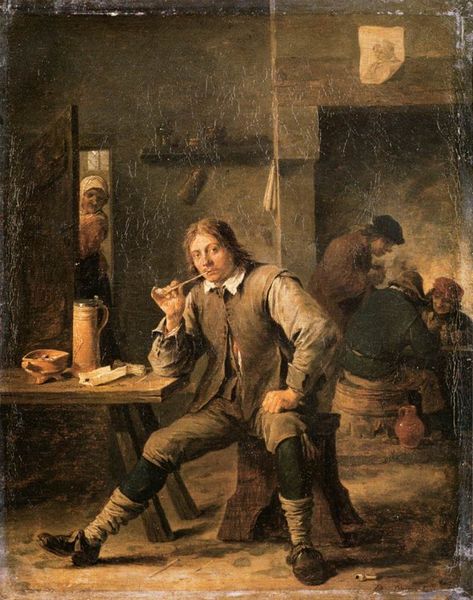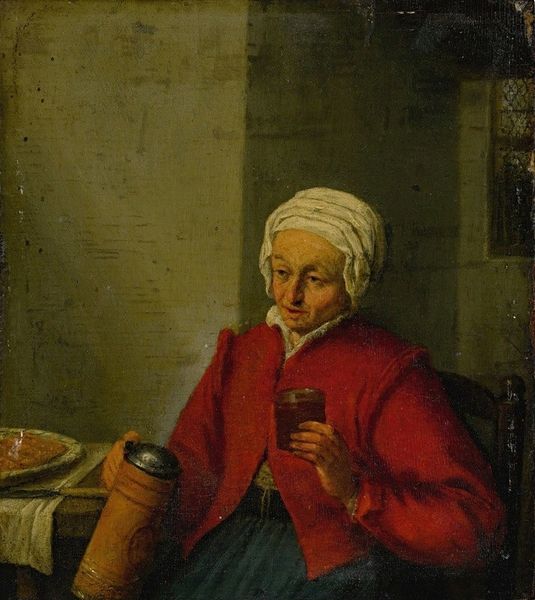
A deacon 1871
0:00
0:00
vladimirmakovsky
Omsk Regional Museum of Fine Arts (Vrubel Museum), Omsk, Russia
painting, oil-paint
#
portrait
#
painting
#
oil-paint
#
genre-painting
#
realism
Dimensions: 79 x 62 cm
Copyright: Public domain
Curator: Good afternoon, welcome to the gallery. Today we’re looking at Vladimir Makovsky’s oil painting, “A Deacon,” from 1871. Editor: My first impression? A profound weariness, but also a strange glint of amusement in his eyes. He’s holding a piece of bread like it’s the most precious thing in the world. Curator: Indeed. Makovsky employs a stark realism here, focusing on the deacon's wrinkled face and threadbare clothing. The palette is largely subdued, with deep blacks and browns that serve to highlight the man's gaunt features and the simple loaf he holds. The texture, achieved with evident brushstrokes, underscores the stark realities faced by lower clergy. Editor: There’s such honesty in the textures. You can almost feel the coarse weave of his jacket and the roughness of his skin. The bread becomes a powerful symbol in its stark contrast to the shadows—like a last hope or tiny victory. Curator: Precisely. Semiotically, bread signifies sustenance, life itself. Here, the Deacon grasps it as if receiving a sacrament, his donation tin a testament to perhaps meager success from collecting donations. Editor: Oh, yes! The way his fingers clutch the tin suggests years of humble, repetitive work. It's poignant, and it reminds me how easy it is to overlook the silent figures who keep the world spinning. There is so much human detail on display: how much suffering he has endured, what joys he remembers... Curator: His positioning in the composition directs our eye. We read his narrative starting from the upper right and going through each point, our line of vision connecting his gestures and highlighting them in a way only he could illustrate. His humanity is front and center in a powerful way. Editor: It almost makes you want to reach out and offer him a bit more than what he holds in the coin container. This is humanity rendered in oils. Curator: It serves as a social commentary on the role of the clergy. The piece does not offer romanticized or glorifying aspects, instead shows us truth without judgement. The painting avoids overt sentimentality. Makovsky compels us to confront realities often ignored. Editor: He reminds me of figures I saw as a child in Russia, those weathered faces full of stories they could never fully tell. A wonderful painting indeed. Curator: A lasting piece for us all to ponder. Thank you for your thoughts.
Comments
No comments
Be the first to comment and join the conversation on the ultimate creative platform.
